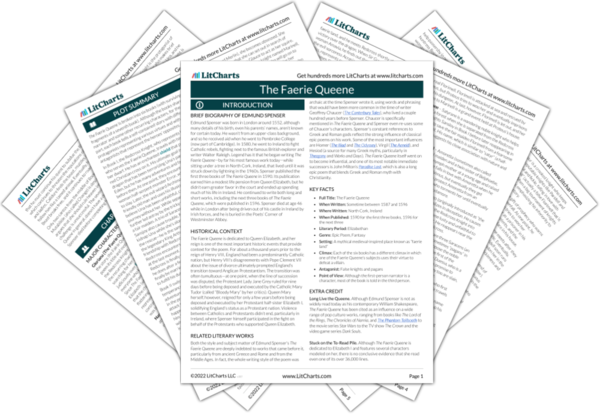Sir Calepine and Serena are ashamed because they know Sir Calidore has seen them and they believe he thinks they were doing something improper. While it’s possible that they
were doing something improper, the presence of the Blatant Beast (which slanders good knights and ladies with false accusations) suggests that Calepine and Serena really might have been doing something innocent.
